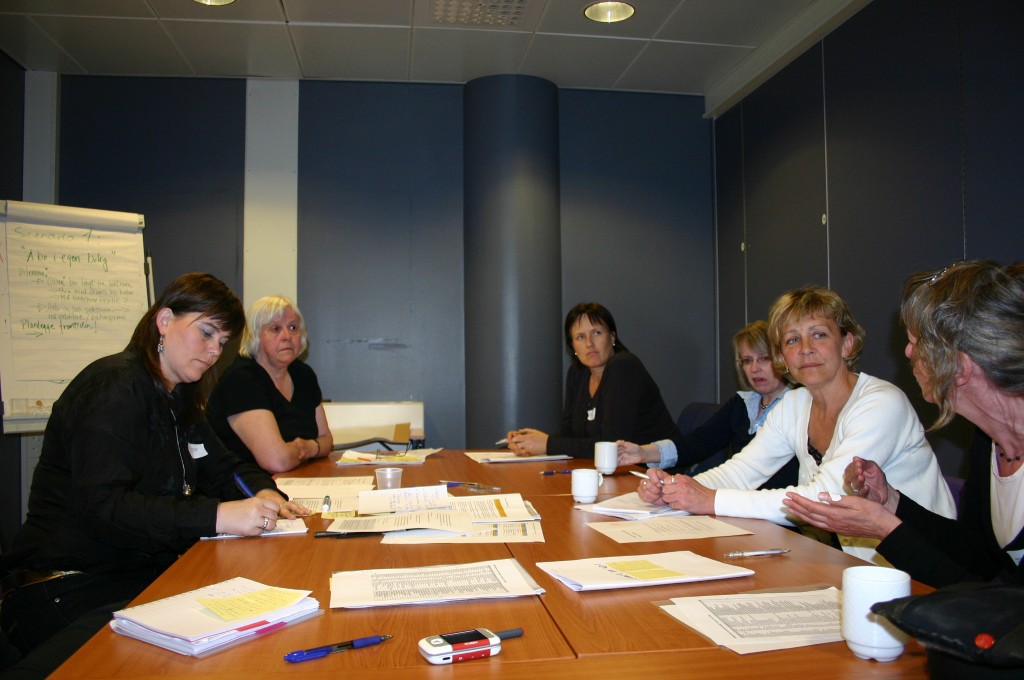
There will always be actors that are affected, positively or negatively by research, technological development and policy decisions. These actors have a stake in the issues, but are not automatically consulted or included in the decision-making process. These stakeholders can be commercial actors, involved in research and development or owners of natural resources (for example farmers being affected by construction activities in their neighborhood). Stakeholders can also be lobby groups or non-profit organizations.
How can they contribute and get involved in policy making? And how can one facilitate this kind of involvement? This is the challenge that the stakeholder example project in PACITA will take on, using one particular method for stakeholder involvement: the scenario workshop.
The typical homogenous groups of experts, who are often involved and consulted in policy processes, can weaken the democratic aspect of policy making because the discussions often will evolve around one expert view. Involving a broader and more balanced spectrum of actors makes the process more transparent and accountable. Stakeholder involvement is one method to make the decisions more robust and socially acceptable. Involving relevant stakeholders in the process can give them ownership to the process. This in turn can make implementation in society easier.
Stakeholder involvement can also lead to better informed policy decisions and more critical discussions about the topic at hand. A variety of voices will make the discussion open to different kinds of knowledge, more perspectives and dilemmas.
Using scenario workshop in policy discussions
A scenario workshop is a method aimed at facilitating forward-looking discussions and identifying policy alternatives in different contexts. In PACITA, the workshops will stimulate discussions on how one can meet the needs and face the challenges of the rising number of older adults in different European countries, with a set of scenarios as a starting point for the discussion.
The purpose of the scenarios is to make the participants more conscious of future developments and connected choices related to technology, and inspire them to critically reflect on them. These discussions will contribute to the development of new visions and policy options.
The aim of the workshop is to identify policy options – how decision makers may handle the challenges of the ageing society using technology.
In addition, the scenario workshop is an arena to grasp the important stakeholders’ views on the topic. Bringing their own experiences, the participants will contribute with their visions, and identify possible barriers and pathways for reaching these visions.
PACITA will organize workshops in 9 European countries: Belgium, Bulgaria, Czech Republic, Denmark, Hungary, Norway , Republic of Ireland, Spain and Switzerland. The same set of scenarios will be used in all countries and each workshop will be summarized in a national report. The findings from the national workshops will later be gathered and analyzed in a synthesis report, to be presented at a policy conference in Brussels in 2014.
Organizing a scenario workshop
The scenario workshop is a one-day event that gathers a broad group of stakeholders. The workshops organized by PACITA will aim at formulating national policy options for each of the involved European countries on the topic of the future of ageing and care technology.
The scenario workshop usually consists of three phases:
- critical analysis
- formulation of visions
- implementation phase
In the first phase, the participants give both positive and negative feedback on the available scenarios, based on their own experiences. With the critical analysis as a starting point, the second phase aims at the participants’ development and articulation of their visions for the future of the topic at stake. The last phase relates to how these visions can be translated into reality. The participants will identify barriers for their visions and propose how these can be overcome by discussing action plans.
